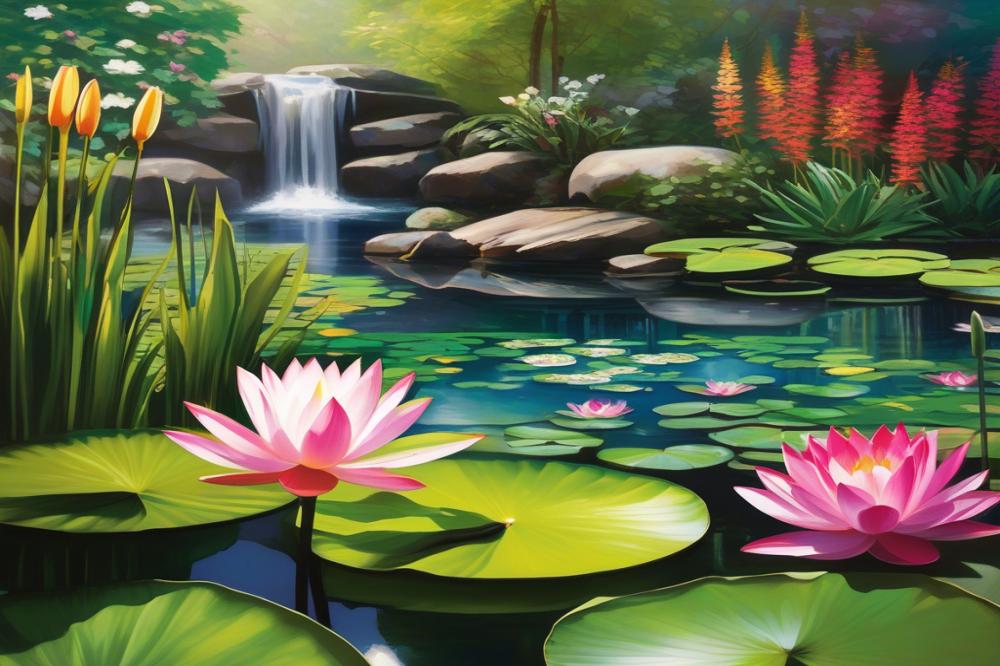Introduction
Overview of Brazilian Starfish Peppers
Brazilian Starfish Peppers are a captivating addition to the world of gardening. This rare pepper variety, known for its striking shape and vibrant colors, offers more than just visual appeal. It also brings a delightful depth of flavor to various dishes. These small, star-shaped peppers can add intrigue to any garden. They thrive in warm climates, which makes them an excellent choice for tropical gardening enthusiasts.
Importance of Growing rare pepper varieties
Cultivating rare pepper varieties holds significant value for many gardeners. These plants introduce diverse flavors and unique aromas to the culinary landscape. Growing them can stimulate creativity in cooking. Moreover, they often attract attention from fellow gardeners and spice lovers. Rare peppers can enhance biodiversity, encouraging healthier ecosystems in home gardens. They also provide the opportunity to learn various cultivation tips and harvesting techniques that differ from more common varieties.
Connection to Tropical Gardening
Tropical gardening provides the ideal environment for growing exotic spices and unique herbs. The Brazilian Starfish Peppers flourish in these conditions, benefiting from ample sunlight and warmth. Proper plant care is crucial for achieving the best results. Regular watering and well-drained soil support healthy growth. Besides pepper varieties, tropical gardens can include an array of colorful plants and herbs, making them vibrant and exciting. This holistic approach to gardening not only beautifies spaces but also creates a culinary paradise rich in flavors.
Growing Brazilian Starfish Peppers


Requirements for Successful Growth
To successfully cultivate this extraordinary pepper, specific conditions must be met. Hot peppers thrive in warm climates and need ample sunlight. An ideal temperature range is between 70°F and 85°F. Nighttime temperatures should not dip too low. Plants prefer a consistent environment that mimics their native tropical habitats. Protecting them from cold drafts will contribute to healthy growth. Understanding these elements is key in any growing guide.
Optimal Climate and Soil Conditions
Soil type plays a significant role in the development of these peppers. A well-draining, loamy soil is preferred. The pH should ideally be around 6.0 to 6.8. This variety enjoys nutrient-rich soil, so adding organic matter can be beneficial. Watering the plants regularly keeps the soil moist, but avoid over-saturation. Mulching can help retain moisture and control temperature. Observing your plants will help you gauge their likes and dislikes.
Seed Selection and Germination Process
Selecting high-quality seeds is essential for the best results. Look for seeds that come from reputable sources to ensure good viability. Germination can be achieved by placing seeds in a warm environment. Using peat pots can simplify the process. Water the soil gently to keep it moist but not soggy. After a week or two, seedlings should emerge. Patience is vital, as some seeds take longer than others to sprout. Once seedlings grow their first true leaves, they will be ready for transplanting. Proper plant care during this phase sets the stage for healthy growth.
Consider following these cultivation tips as you embark on your gardening journey. With consistent attention, your peppers could soon thrive. Enjoy the fruits of your labor through various culinary uses once they are ready for harvesting. Not only will you delight in your hot peppers, but you’ll also appreciate adding exotic spices to your dishes.
Cultivation Tips


Watering and Fertilization Practices
Water is essential for growth. As the plants begin to sprout, keep the soil moist but not soggy. Overwatering can lead to root rot. Use well-draining soil to help manage moisture levels. Once established, they will need less frequent watering. Consider applying a balanced fertilizer every four to six weeks. This helps provide nutrients that are vital for healthy development. Organic compost can also improve soil quality and promote strong root systems.
Sunlight Exposure and Temperature Management
Sunlight plays a critical role in growing hot peppers. Ideally, these plants should receive at least six hours of direct sunlight each day. If grown indoors, place them by a sunny window or under grow lights. Temperatures around 70 to 85 degrees Fahrenheit are perfect for growth. Avoid exposing them to frost, as cold can damage the foliage and fruit. As the summer heat peaks, consider some afternoon shade to prevent excessive stress on the plants.
Pest and Disease Prevention Strategies
Pests can be a concern for any type of gardening. Common pests include aphids, spider mites, and whiteflies. Inspect the plants regularly for signs of these insects. If a problem arises, use insecticidal soap or neem oil for treatment. Crop rotation can help manage diseases. Remove any debris around the garden area to discourage fungal growth. Encourage beneficial insects like ladybugs that feed on harmful pests. Practicing good sanitation will lead to healthier plants and a better harvest.
Varieties of Brazilian Starfish Peppers


Brazilian Starfish Peppers belong to a rare group of hot peppers, offering a distinct twist in the world of spicy cuisine. They’re often compared to varieties like Habaneros and Scotch Bonnets, which have become popular in many kitchens. While those peppers are more fiery, the Starfish peppers provide a milder heat. Heat levels typically land between 1,500 to 5,000 Scoville Heat Units (SHU). For reference, Jalapeños range from 2,500 to 8,000 SHU, making Brazilian Starfish relatively tame.
Description of Flavor Profile and Heat Level
This pepper features a sweet, fruity flavor complemented by a subtle tartness. When cooked, the taste deepens and adds complexity to dishes. Many enthusiasts describe it as having a hint of citrus or tropical fruit, enhancing various culinary applications. The heat comes on gradually, allowing one to savor its bold taste before feeling the burn. This makes it an excellent choice for those wanting heat without overwhelming the palate.
Unique Characteristics of Brazilian Starfish Peppers
These peppers are distinct not only in flavor but also in appearance. Shaped like a starfish, they exhibit ribbed edges, which can be visually striking in gardens. Their color ranges from green to a rich red or yellow as they mature. This transformation adds visual interest, especially in tropical gardening setups. Additionally, they perform well in warm climates and can flourish in containers with proper care. Consider using growth techniques that make the most out of limited space if you’re gardening in tight quarters.
Harvesting methods vary depending on personal preference and the purpose of the peppers. Some gardeners choose to pick them early when they are still green, while others wait until they fully ripen. Time of day can also affect the harvesting process; mornings are ideal, as the peppers are still cool from the night. When using these peppers in cooking, they pair well with diverse dishes, from salsas to marinades, making them a delightful addition to any kitchen.
Plant care for Brazilian Starfish Peppers includes regular watering and ensuring they receive ample sunlight. Fertile, well-drained soil contributes to healthy growth. Organic fertilizers can enhance flavor and yield, creating an environment conducive to successful cultivation. Employing effective pest management techniques protects the plants, allowing them to thrive throughout the growing season. Following a solid growing guide can help any gardener unlock the potential of these exotic spices.
Harvesting Techniques


Timing for Optimal Harvest
Harvesting hot peppers at the right time is crucial for the best flavor. Brazilian Starfish Peppers typically reach their peak ripeness between 75 to 85 days after planting. Color plays an important role in determining this. When the peppers turn a vivid orange or bright red, they are ready to be picked. Keep an eye on the skin texture as well. Smooth and shiny skin signals optimal ripeness. Regularly check the plants to ensure you don’t miss the perfect moment.
Methods for Picking and Storing Peppers
Gathering these exotic spices requires care. Use garden shears or scissors for safe cutting. Avoid pulling the peppers off by hand, as this can damage the plant. Focus on cutting the stem about one inch above the fruit. After harvest, prompt storage is vital. Place the peppers in a cool, dry spot. For short-term use, refrigerate them to maintain freshness. Some gardeners choose to dry their harvest. When drying, hang them in a well-ventilated area away from direct sunlight. This method enhances the flavor while allowing for long-term storage.
Post-Harvest Care to Enhance Flavor
After picking, proper care can elevate the culinary uses of your peppers. Rinse them gently under cool water to clean any dirt or residue. Once cleaned, dry them thoroughly to prevent mold. Some gardeners recommend placing the peppers in a paper bag for a few days. This can enhance their texture and flavor. If you plan to reuse seed from your harvest, allow some to fully ripen and dry out on the plant. Store seeds in a cool place away from moisture and heat. For an innovative twist, consider blending peppers with other local pepper varieties. This can create unique flavor combinations for cooking and seasoning.
Using these harvesting techniques and cultivation tips will make your experience rewarding.
Culinary Uses
Incorporating Brazilian Starfish Peppers into various dishes can elevate flavors in unexpected ways. These peppers often add a vibrant kick to traditional recipes. When used in cooking, they offer a pleasing combination of heat and sweetness.
Incorporating Brazilian Starfish Peppers in Dishes
Utilizing these hot peppers in your meals is simple. They can be sliced fresh into salads for added zest. Pureeing them into sauces creates a delightful base for pizzas or pastas. Making chili or stew? Adding these peppers can enhance the overall taste profile.
Exploring Unique Flavors in Hot Sauces and Salsas
Crafting homemade hot sauces becomes a fun and creative process with this pepper variety. The distinct flavor complements tomatoes and garlic well, forming a rich salsa. Combining these elements results in a tangy dip perfect for chips or grilled meats. Salsas can experiment further, incorporating fruits like mango or pineapple to balance the heat.
Benefits of Using Exotic Spices in Cooking
Enhancing dishes with spices like these contributes more than flavor. Exotic ingredients broaden one’s culinary repertoire, introducing new textures and aromas. They can make even routine meals exciting. Using diverse elements in recipes often promotes creativity and fosters an adventurous spirit in the kitchen.
While growing guide and cultivation tips can help yield flavorful peppers, harvesting techniques allow for optimal taste. Seek out plant care practices for successful tropical gardening. Whether preparing a simple recipe or an elaborate feast, embracing the charm of hot peppers opens up endless possibilities.
Wrapping It Up
In summary, cultivating Brazilian Starfish Peppers offers a rewarding experience for both novice and seasoned gardeners. They require a warm environment, well-draining soil, and consistent watering to thrive. Be sure to follow the growing guide to navigate their unique needs. Additionally, paying attention to temperature and light will promote healthy growth and vibrant colors.
Exploring rare varieties opens up a world of possibilities in gardening. Each uncommon species can bring new flavors and textures to your culinary adventures. Embrace the challenge and diversity that these plants provide. Experimenting with unusual types can lead to discoveries that enhance your garden’s appeal.
Finally, there is joy in nurturing and watching your plants grow. The process of caring for hot peppers can be both fulfilling and educational. Celebrate each stage of growth, from seedling to harvest. With patience and dedication, your efforts will reward you with a bountiful supply of delicious peppers.



